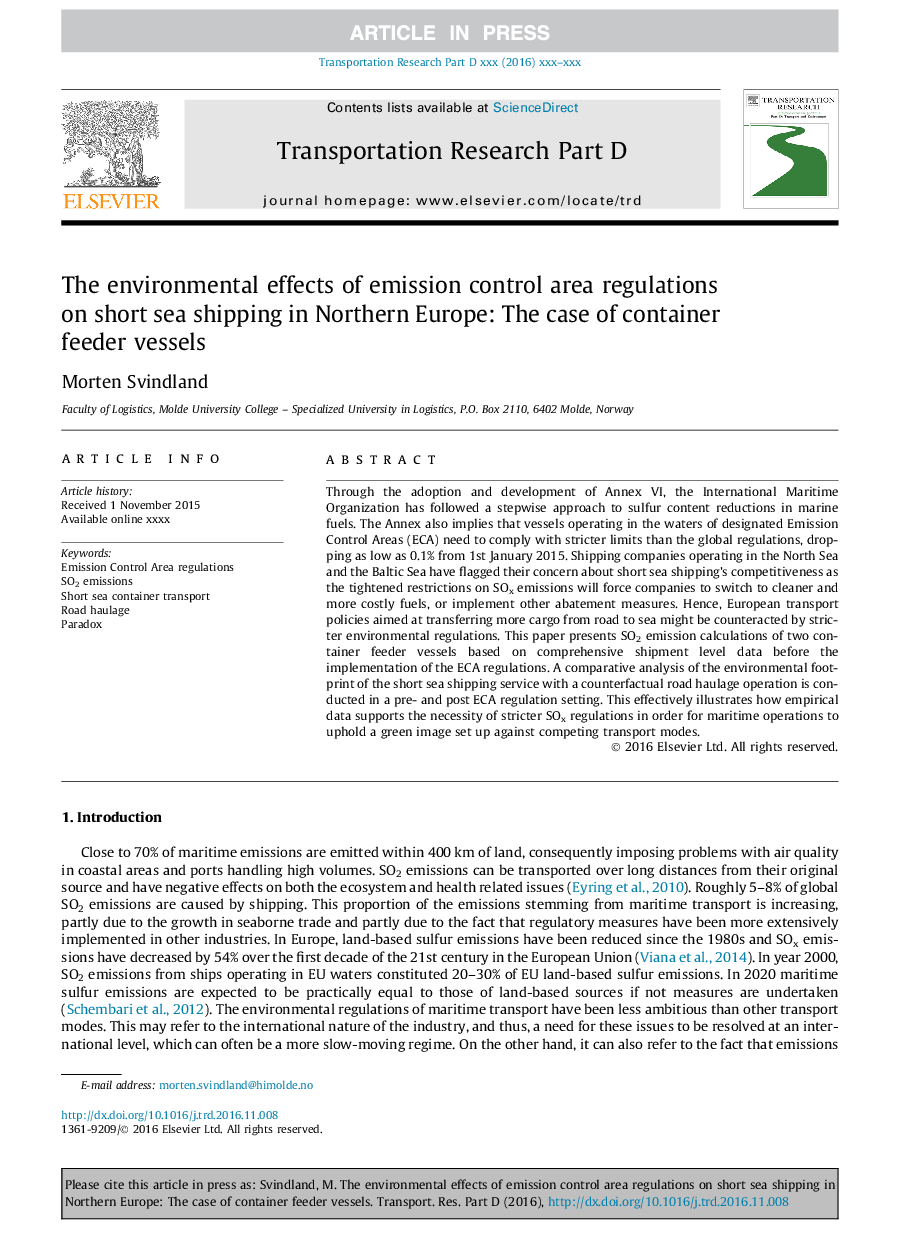| Article ID | Journal | Published Year | Pages | File Type |
|---|---|---|---|---|
| 7498838 | Transportation Research Part D: Transport and Environment | 2018 | 8 Pages |
Abstract
Through the adoption and development of Annex VI, the International Maritime Organization has followed a stepwise approach to sulfur content reductions in marine fuels. The Annex also implies that vessels operating in the waters of designated Emission Control Areas (ECA) need to comply with stricter limits than the global regulations, dropping as low as 0.1% from 1st January 2015. Shipping companies operating in the North Sea and the Baltic Sea have flagged their concern about short sea shipping's competitiveness as the tightened restrictions on SOx emissions will force companies to switch to cleaner and more costly fuels, or implement other abatement measures. Hence, European transport policies aimed at transferring more cargo from road to sea might be counteracted by stricter environmental regulations. This paper presents SO2 emission calculations of two container feeder vessels based on comprehensive shipment level data before the implementation of the ECA regulations. A comparative analysis of the environmental footprint of the short sea shipping service with a counterfactual road haulage operation is conducted in a pre- and post ECA regulation setting. This effectively illustrates how empirical data supports the necessity of stricter SOx regulations in order for maritime operations to uphold a green image set up against competing transport modes.
Keywords
Related Topics
Life Sciences
Environmental Science
Environmental Science (General)
Authors
Morten Svindland,
